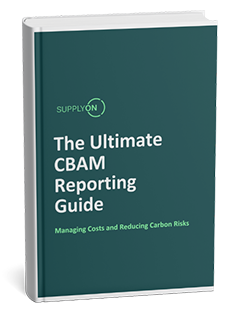
The journey to sustainability begins with understanding the environmental impact of our products. However, with various metrics available, it can be challenging to know where to start. In this blog we focus on two important measures: Product Environmental Footprint (PEF) and Product Carbon Footprint (PCF). We explain their differences below and why both metrics are essential for a comprehensive approach to sustainability.
In a nutshell – Difference between PEF and PCF?
PEF and PCF are both tools used to measure the environmental impact of products, but they differ in scope and focus. PEF provides a comprehensive assessment covering multiple environmental impacts such as water use, land use, and pollution, while PCF specifically focuses on the greenhouse gas emissions associated with a product. These differences make PEF suitable for a holistic environmental strategy and PCF more focused on carbon management and reduction.
What is the PEF?
The PEF is a method for measuring the environmental impact of a product throughout its entire lifecycle, considering a wide range of environmental factors. PEF covers various environmental impacts, including water use, land use, pollution, and resource depletion. It provides a detailed and thorough understanding of the environmental aspects associated with a product, from raw material extraction to disposal. PEF utilizes the Life Cycle Assessment (LCA) approach, which examines the environmental impacts at every stage of a product’s lifecycle. This includes raw material extraction, manufacturing, distribution, use, and end-of-life disposal. The methodology is grounded in international standards such as ISO 14040 and ISO 14044, ensuring consistency and reliability. Additionally, PEF is guided by the European Commission’s specific guidelines and frameworks, which further enhance its credibility and adoption across industries.
What is the PCF?
In contrast, the PCF specifically measures the total amount of greenhouse gas emissions (expressed in CO2 equivalents) generated by a product throughout its lifecycle. PCF focuses solely on carbon emissions, including direct and indirect emissions from production, transportation, use, and disposal. It provides a targeted assessment of a product’s impact on climate change. PCF calculations are based on carbon accounting principles and often use the Greenhouse Gas (GHG) Protocol Product Life Cycle Accounting and Reporting Standard. This methodology emphasizes the quantification of carbon emissions at each stage of the product lifecycle, ensuring a clear and focused understanding of its climate impact. PCF is governed by standards such as the GHG Protocol, ISO 14067, and other regional carbon reporting guidelines, providing a robust framework for accurately measuring and reporting carbon emissions.
Key Differences Between PEF and PCF

The main differences between PEF and PCF lie in their scope and coverage. PEF evaluates multiple environmental impacts, including water use, land use, pollution, and resource depletion, while PCF concentrates exclusively on carbon emissions, providing a focused assessment of climate impact. Methodologically, PEF employs a broader Life Cycle Assessment (LCA) approach, considering a wide range of environmental factors, whereas PCF uses specific carbon accounting methods, emphasizing the quantification of greenhouse gas emissions. In terms of applications, PEF is ideal for comprehensive environmental reporting and sustainability strategies, suitable for businesses seeking a holistic understanding of their environmental impacts and aiming to implement broad sustainability initiatives. On the other hand, PCF is best suited for carbon management and reduction strategies, helping businesses identify and mitigate their carbon footprint, aligning with climate action goals and regulatory requirements.
To illustrate the practical application of these metrics, consider industries like food and beverage, electronics, and textiles. In the food and beverage sector, PEF can assess the overall environmental impact of production, packaging, and distribution, while PCF focuses on the carbon emissions from agricultural practices, processing, and transportation. In electronics, PEF evaluates resource use, waste generation, and pollution, whereas PCF highlights the carbon footprint of manufacturing and energy consumption.
Conclusion
In conclusion, PEF and PCF are essential tools for understanding and managing the environmental impacts of products. PEF provides a broad assessment of multiple environmental factors, while PCF offers a focused analysis of carbon emissions. Together, they offer a robust framework for sustainable business practices. Encouraging businesses to adopt both PEF and PCF metrics will lead to a comprehensive approach to sustainability, enhancing environmental performance, meeting regulatory standards, and responding to consumer demand for sustainable products. As environmental concerns continue to grow, the importance of accurate and comprehensive footprint metrics will only increase. The future of sustainability lies in the integration of holistic and specific impact assessments, guiding businesses toward a more sustainable and responsible future.


